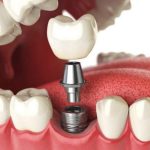Temporomandibular Joint (TMJ) Disorders
Temporomandibular Joint (TMJ) disorders refer to a syndrome involving pain and functional impairment affecting the jaw joint and the muscles responsible for chewing. These disorders occur when the harmony between the joint surface and the articular disc is disrupted. Today, TMJ disorders affect a significant portion of the population.
Symptoms of TMJ Disorders:
-
Pain during mouth opening
-
Clicking, popping, or grinding sounds when opening or closing the mouth
-
Limited ability to open the mouth or jaw locking
-
Neck pain or stiffness
-
Headaches (often mistaken for migraines)
-
Pain while chewing
-
Facial pain
-
Pain while bringing the upper and lower teeth together
-
Jaw fatigue during chewing
-
Difficulty and pain in opening the jaw, especially in the morning
-
Difficulty yawning
-
Ear pain
-
Tinnitus or roaring sounds in the ears
-
Sudden changes in the way the upper and lower teeth align
-
Facial asymmetry possibly due to muscle hypertrophy
-
Jaw deviation during mouth opening
-
Sensation of fullness or pressure in the ears
Degenerative changes in the disc or condyle, or disc displacement, may occur within the TMJ. However, not all clinical symptoms can be attributed solely to disc displacement; dysfunction of the masticatory muscles must also be considered.
Causes of TMJ Disorders:
-
Direct trauma to the jaw or joint area (accidents or impacts)
-
Habitual unilateral chewing
-
Missing teeth
-
Teeth grinding and clenching (bruxism)
-
Stress, depression, and related psychological factors
-
Malocclusion (improper bite)
-
Developmental defects of the joint (e.g., hypoplasia)
-
Degenerative joint diseases (e.g., osteoarthritis, arthrosis)
-
Autoimmune diseases (e.g., rheumatoid arthritis, lupus)
-
Unknown (idiopathic) factors
Diagnosis and Treatment of TMJ Disorders
Diagnosis includes clinical examination supported by various tests. Imaging methods such as conventional or computed tomography and magnetic resonance imaging (MRI) are commonly used. In rare cases, scintigraphy or PET scans may be required.
Examination Methods:
-
Examination of the teeth and occlusion
-
Palpation of the masticatory muscles
-
Assessment of TMJ function and movement
TMJ Treatment
-
Management of symptoms
-
Treatment of the underlying cause
-
Elimination of contributing factors
-
Treatment of pathological effects
Treatment Options:
-
Patient education and preventive care
-
Splint therapy
-
Medication (painkillers, muscle relaxants, anti-inflammatories)
-
Therapeutic exercises
-
Physical therapy
-
Manual manipulation
-
Psychiatric support
-
Advanced treatments in late-stage cases (e.g., surgery)
During the Treatment Process:
-
Reducing the load on the joints is crucial. The patient should avoid stress.
-
Chewing gum and consuming hard foods that strain the jaw are strictly prohibited.
-
During yawning or sneezing, the mouth should not be opened excessively, and the jaw should be supported with a hand.
-
Biting with force is prohibited; food should be consumed in small pieces.
-
Avoid unilateral chewing; food must be chewed on both sides.
-
If pain is severe before professional consultation, painkillers, muscle relaxants, and anti-inflammatory medications may be used temporarily.
At the End of the Treatment:
-
Premature and pathological contacts on the teeth are corrected.
-
Occlusion is assessed, and if necessary, the patient is referred to orthodontics.
-
Missing teeth are restored with prosthetic treatments to achieve a neutral bite.
-
If bruxism persists, psychiatric consultation is recommended.
Important Note:
Successful treatment of TMJ dysfunction requires a multidisciplinary approach, with patient compliance being the key factor. In addition to treatment by a TMJ specialist, consultations with physical therapists, psychiatrists, and neurologists may be required.


